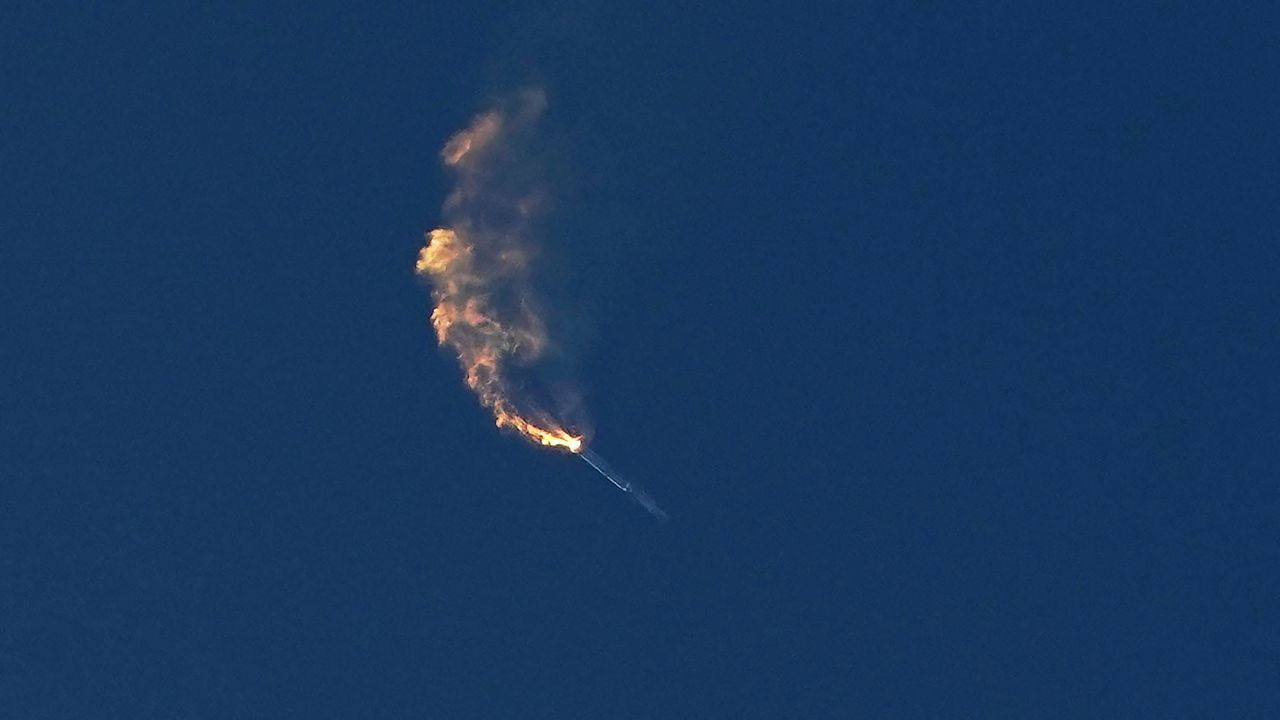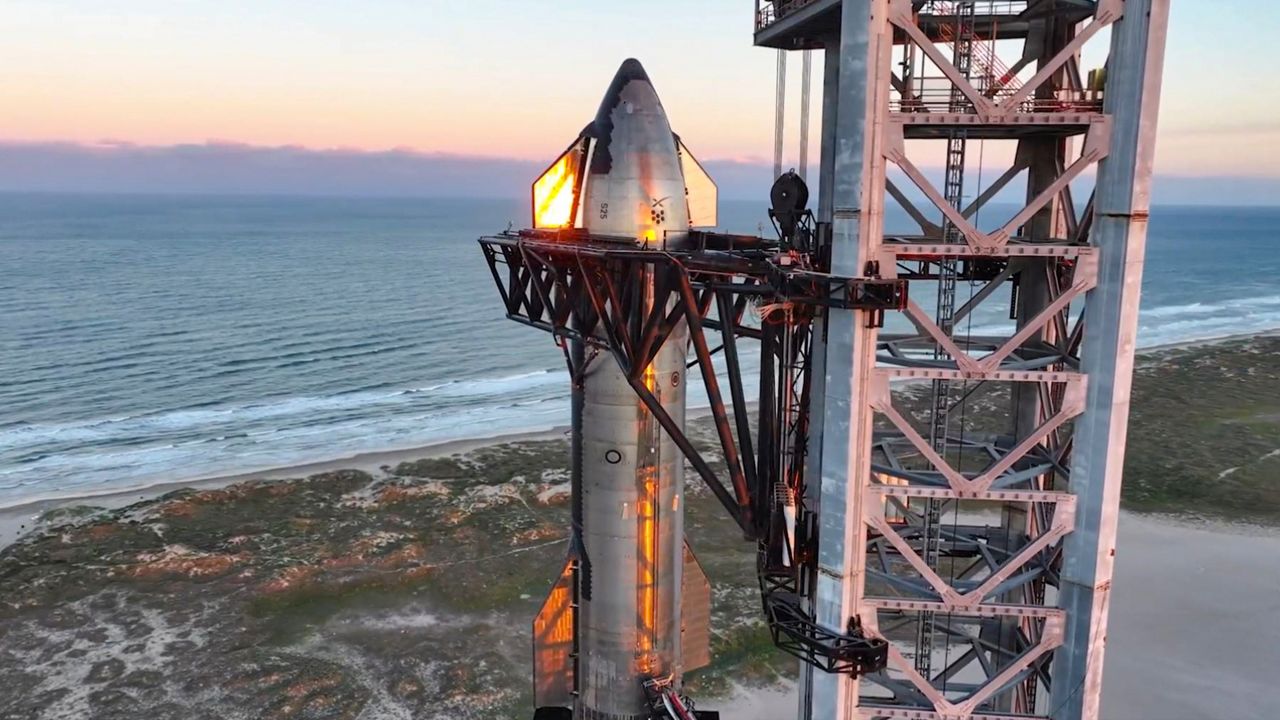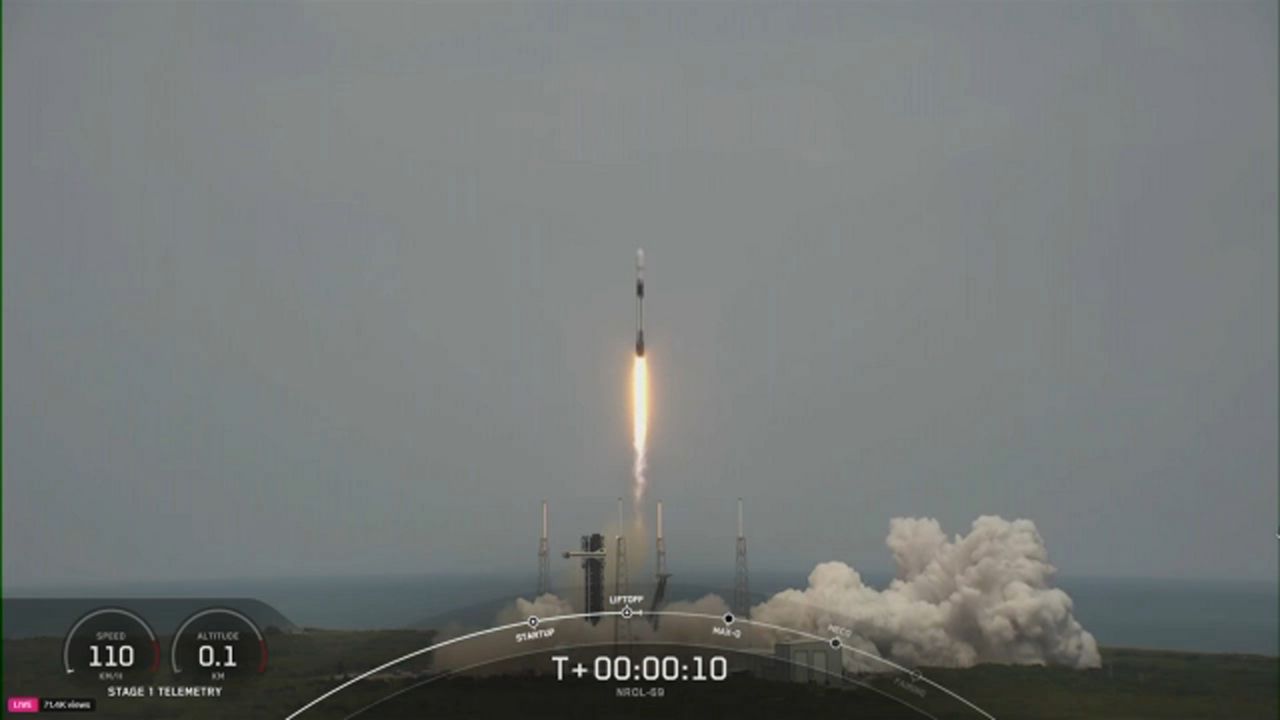BOCA CHICA, Texas — Nearly seven months after the first flight test of Starship, which ended in its “rapid unscheduled disassembly,” SpaceX is preparing for its second test of the ship that one day may take humans to Mars.
What You Need To Know
- The first attempt in April resulted in the Starship blowing up
- The launch will take place Friday, Nov. 17 at 8 a.m. ET in Texas
On Wednesday, the Federal Aviation Administration (FAA) granted SpaceX the approval to launch its second flight test of the famed Starship.
The FAA has given license authorization for the second launch of the @SpaceX Starship Super Heavy vehicle. The FAA determined SpaceX met all safety, environmental, policy and financial responsibility requirements.https://t.co/gmSbhHGohv
— The FAA ✈️ (@FAANews) November 15, 2023
That means the 397-foot-tall (121-meter) Starship spacecraft and the Super Heavy rocket — jointly known as Starship — is expected to take off at 8 a.m. ET, Friday, from Starbase in Boca Chica Beach, Texas, confirmed SpaceX.
Countdown to launch
SpaceX CEO and founder Elon Musk posted on X on Tuesday that he was “informed that approval to launch should happen in time for a Friday launch.”
The FAA, which closed its investigation into SpaceX’s first flight attempt, has required the California-based company to take 63 corrective actions before trying for a second launch attempt.
SpaceX had to apply for a modified FAA license before lifting off again.
“As part of that license application determination process, the FAA will review new environmental information, including changes related to the launch pad, as well as other proposed vehicle and flight modifications,” the FAA stated.
The first launch attempt

On April 20 of this year, Starship left the launch pad from SpaceX's Starbase.
Starship climbed 24 miles (39 kilometers) into the deep blue and over the Gulf of Mexico as problems arose. The ship itself was losing altitude and begin to tumble as several of the 33 Raptor engines failed to ignite.
The rocket’s self-destruct system — called the Autonomous Flight Safety System (AFLSS) — was activated to blow up the rocket, but there was a delay of 40 seconds before it blew up. The remains of the world’s powerful rocket fell into the Gulf of Mexico.
On the day, SpaceX posted on X, formerly known as Twitter, “As if the flight test was not exciting enough, Starship experienced a rapid unscheduled disassembly before stage separation.”
As if the flight test was not exciting enough, Starship experienced a rapid unscheduled disassembly before stage separation
— SpaceX (@SpaceX) April 20, 2023
SpaceX stated that fuel leaks during the climb caused fires to erupt at Starship’s tail, cutting connection with the main flight computer and leading to a loss of control.
“During ascent, the vehicle sustained fires from leaking propellant in the aft end of the Super Heavy booster, which eventually severed connection with the vehicle’s primary flight computer. This led to a loss of communications to the majority of booster engines and, ultimately, control of the vehicle,” SpaceX explained.
The liftoff itself destroyed the launch pad, which sent debris flying for miles. One of the FAA’s recommendations is for a stronger launch pad and “increase its robustness”. Since then, SpaceX stated that upgrades and reinforcements to the pad’s foundation have been made and a flame deflector has been added.
The destruction of the Starship also led wildlife and environmental groups to file lawsuits against the FAA, claiming the agency should have considered the ecological impacts of the Starship program near Boca Chica Beach in South Texas.
Improving Starship for the second flight test
Both the Super Heavy rocket, with its 33 Raptor engines fueled by thousands of tons of sub-cooled liquid oxygen and liquid methane, and the Starship are designed to be reusable.
The Starship is designed to carry a crew of 100 people and cargo to Earth orbit, the moon and eventually Mars, according to the ship’s user guide.
But the ship has been upgraded, according to SpaceX. Earlier it was mentioned how leaking propellant caused the various issues that resulted during the first flight attempt.
SpaceX stated that it has improved the hardware to both the booster and engine of the ship and expanded a pre-existing fire suppression system.
“SpaceX has since implemented leak mitigations and improved testing on both engine and booster hardware. As an additional corrective action, SpaceX has significantly expanded Super Heavy’s pre-existing fire suppression system in order to mitigate against future engine bay fires,” the company stated.
For the famed Raptor engines of the Super Heavy rocket, upgrades have been made there as well.
“Additionally, SpaceX has engineered a new electronic Thrust Vector Control (TVC) system for Super Heavy Raptor engines. Using fully electric motors, the new system has fewer potential points of failure and is significantly more energy efficient than traditional hydraulic systems,” SpaceX confirmed.
Regarding the ship’s auto destruct system that was delayed, SpaceX assured that it has enhanced the AFSS to improve its reliability.
While many SpaceX fans are familiar with the first-stage booster separation of a Falcon 9 launch, there is a new form of separation that is being introduced to the second flight attempt.
Called the hot-stage separation system, the Starship’s second-stage engines are designed to ignite to push the ship away from the booster.
Spectrum News reached out to SpaceX for comment on the improvements made to Starship, but has not yet heard back from the company.
In anticipation of the launch, Cameron County Parks and Recreation in Texas issued a press release, saying the Boat Ramp Facility at Isla Blanca Park, which is near the launch site, will be closed temporarily on Friday for safety reasons.
It is expected to be reopened after the launch and “all safety concerns have been removed,” it stated.
Some information on Starship
If all goes smoothly when the launch does happen, the flight director will conduct a poll to begin loading the 3,400 tons of propellant into the Super Heavy booster followed by the 1,200 tons of propellant into Starship.
The stacked Starship craft and rocket dwarfs the Statue of Liberty by nearly 100 feet.
When it does launch, the 33 Raptor engines will ignite, fueled by a combination of liquid methane and liquid oxygen.
Starship is designed to be a fully reusable rocket, with both the Super Heavy booster and the Starship spacecraft being capable of multiple flights.








